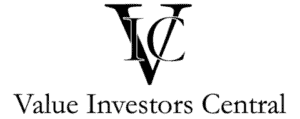Most value investors keenly watch companies earning reports every time they are released, and for good reason. Stock prices generally follow earnings, so if a company’s earnings increase, the stock will likely go up. However, a company’s free cash flow is a more accurate picture of its profitability.
A good price to free cash flow for value investing is below 15. However, this can change with industry; companies with expected high earnings growth may have an acceptable higher figure, whereas companies with expected low earnings growth will demand a lower figure.
What is the price to free cash flow ratio?
Value investing is an investment strategy that involves identifying undervalued companies and buying their stocks at a discounted price. One of the key metrics used in value investing is the price to free cash flow ratio, which measures the value of a company relative to its ability to generate cash.
Free cash flow is the amount of cash a company generates after deducting capital expenditures from its operating cash flow. This metric is important because it represents the cash available to the company for growth, acquisitions, and returning value to shareholders through dividends or share buybacks.
A good price to free cash flow ratio for value investing depends on several factors, including the industry, the stage of the company’s growth, and the investor’s risk tolerance. As a general rule, a low price to free cash flow ratio indicates that the company is undervalued, while a high ratio suggests that the company is overvalued.
However, it is important to note that a low price to free cash flow ratio does not necessarily mean that the company is a good investment. Investors must also consider the company’s financial health, competitive position, and growth prospects before investing.
Factors That Affect Price to Free Cash Flow
When evaluating the price to free cash flow ratio for value investing, investors should consider the following factors:
Industry: Different industries have different capital requirements and growth rates, which affect the amount of free cash flow a company can generate. For example, a capital-intensive industry like manufacturing may have lower free cash flow than a service industry like software. Therefore, a low price to free cash flow ratio may be more attractive in a capital-intensive industry than in a service industry.
Stage of growth: Companies in different stages of growth may have different free cash flow profiles. For example, a mature company with stable revenue and earnings may have higher free cash flow than a young company with high growth potential but higher capital expenditures. Therefore, investors should consider the stage of the company’s growth when evaluating the price to free cash flow ratio.
Financial health: A company with high debt levels or poor financial health may have lower free cash flow than a company with a strong balance sheet. Therefore, investors should evaluate the company’s financial health and debt levels before investing.
Competitive position: A company with a competitive advantage or strong market position may be able to generate higher free cash flow than a company with weaker competitive positioning. Therefore, investors should evaluate the company’s competitive position when evaluating the price to free cash flow ratio.
Growth prospects: A company with strong growth prospects may be able to generate higher free cash flow in the future, even if its current free cash flow is low. Therefore, investors should consider the company’s growth prospects when evaluating the price to free cash flow ratio.
In general, a price to free cash flow ratio of less than 15 is considered attractive for value investing. However, investors should also consider the other factors mentioned above when evaluating the ratio.
It is important to note that the price to free cash flow ratio is just one of many metrics that value investors use to evaluate companies. Other metrics include the price to earnings ratio, price to book ratio, and dividend yield. Value investors also consider qualitative factors, such as the company’s management team, competitive positioning, and industry trends.
Conclusion
In conclusion, a good price to free cash flow ratio for value investing depends on several factors, including the industry, stage of growth, financial health, competitive position, and growth prospects. While a low price to free cash flow ratio may be attractive for value investing, investors should also consider other metrics and qualitative factors when evaluating companies. By doing so, investors can increase their chances of finding undervalued companies with strong growth potential and favorable risk/reward profiles.


